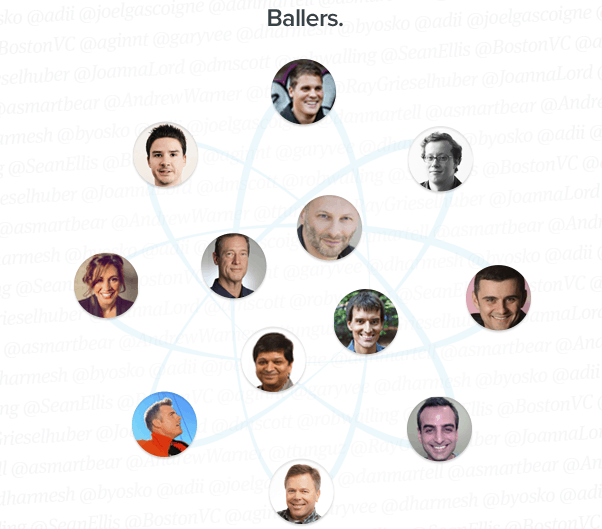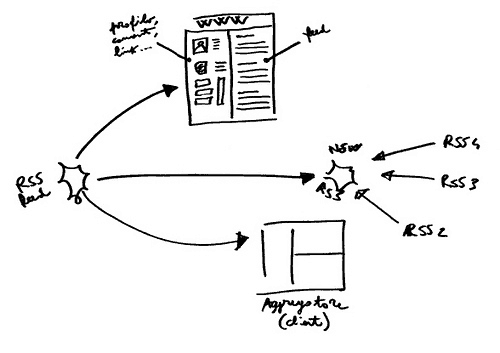This is part two of an irregular series where we enlist the collective experiences and intelligence of successful marketers to glean insights on how to be better at content marketing. In case you missed the last one, it’s titled, 10 Content Marketers Reveal Their Secrets.
So, you’ve built a blog, invested a grand amount of time (and money) in creating some of the best content in your niche — these are, naturally, the best pieces you’ve ever written — yet your analytics tools tell you yesterday your post received less than 100 unique visits.
That sucks. What am I doing wrong? What SHOULD I be doing?
It’s obvious. Your promotional tactics are flawed (or non-existent). Let’s change that. In this post, we share 12 great insights on how you can get your content to reach the right people (and more of ’em).
This is hardly an exhaustive list, and while you might already be doing some of these things, we hope some of these tips are surprising and new to you. Try them out and let us know how effective they are for you.
OK, now for the good stuff. Here are 12 of the best content distribution tips:
1. Find super-niche communities
It’s counter-intuitive, but finding a smaller number of the right people (vs, well, everybody) will lead to more pageviews in the long-run.
Dan Scalco, Founder of Digitalux, says, “If more than a few people are interested in [your niche], chances are, there’s an online community out there dedicated to it. When you find these online communities, be it a forum or Facebook group, don’t just spam your article and leave. Engage them, build a reputation as an authority within your space.”
Don’t fret if a group only has 50 members. If it’s super-niche and ALL of the members are active participants, you’re more likely to turn them into loyal readers of your content versus if you were to try to engage 10,000 passive members in a broader industry forum elsewhere.
2. Reuse your content like it’s your job (because it is)
Great content should be recycled, repurposed and reused for different mediums.
Lee Price, Marketing Director at Reputation Capital Media, suggests, “If you host a great webinar, release a new white paper or publish an infographic, think about other places where you can re-use that content. We like writing blog posts recapping events and webinars. We turn white papers into bite-sized SlideShare presentations. If you put a significant amount of time and energy into a new content marketing asset, spend some time thinking about how you can repurpose and repackage it for different audiences to extend the reach of every word you write.”
Some people prefer text. Others are more engaged with visual content. Therefore, you have to make sure your content can be consumed in a variety of different ways. How else can you repurpose your content?
Alyssa Mattero, Senior Manager of Digital and Content Marketing at Perfect Search, believes, “Your content should be liquid in form. Turn [a] blog post into a press release. Turn a page of copy into an infographic and an infographic into a video. If you have a good idea or strong data, capitalize on it! You can use the same concepts or information to create a large amount of content.”
Essentially, “Every piece of content can be altered for a different medium with minimal involvement. This means more content, gaining more exposure, in less time,” says Andrew Krebs-Smith, President and Founder of Social Fulcrum.
3. Make it shareable
With digital content, we expect sharing to be easy. Felix Salmon, a blogger at Reuters, says it perfectly. “We live in a social world, where if I find a story I love, the first thing I want to do is be able to share it.” Of course, he’s talking about the failures of content paywalls. So, first, make your content accessible, then make it shareable. But how?
Add available, yet non-obtrusive social sharing buttons. “[This] takes the promotion out of your hands and makes it easier for your audience to do the work for you. It can also help to create a snowball effect with your content,” says Matt Zajechowski of Digital Third Coast Internet Marketing.
Taking this a step further, Raam Anand, Founder of infoYOGIS, recommends adding calls-to-action encouraging readers to share. Deanna Ayres of Marketing Zen suggests you also “get your team involved in sharing.” If you have 20 employees, that’s 20 different networks you can tap into which would hopefully lead to further sharing.
4. Use Facebook (no, seriously)
Facebook’s inevitable world dominance also means it’s a marketing channel you must not ignore.
From Kurt Elster’s experience as the Creative Director of Ether Cycle, he knows “Facebook drives more traffic than any other social network.” A study we published last month suggests that Facebook drives 8.9 times as many referrals as Twitter does.
Therefore, it might be worth increasing the numbers of fans you have on Facebook and getting your existing fans more engaged with your brand, so when you share an update with a new post, they’ll be more likely to like, comment on, and share it. Twitter’s incredibly successful IPO does not guarantee it will live up to all the hype (of course, this remains to be seen). But for now, Facebook is the go-to channel for distributing content to drive the most social referral traffic.
5. Get personal on LinkedIn
LinkedIn has quietly built a massive media empire, which has encouraged more engagement and sharing on the platform.
Now, tapping into your professional social graph is easier than ever. You can target the right readers using LinkedIn’s unique share feature, which allows you to share an update publicly (or just with your connections), in groups, or to specific individuals.
Price (of Reputation Capital Media) swears by it. “We love [LinkedIn]…. While it’s important to use LinkedIn messages with discretion, they are a great tool for getting your content into the hands of relevant contacts. Choose your audience wisely and tell them why your content will make their job easier.”
6. Make email work for you
Email marketing ain’t easy. There’s an art to it, and if you do it right, you’ll reap all the rewards.
“I read a lot of headlines about why email marketing is no longer effective. I couldn’t disagree more. We spend a lot of time making our marketing emails and newsletters relevant, fun and flawlessly edited. And, we often find that new contacts are on our email list for months before they take action — and that’s okay. Well-executed marketing emails are our secret sauce for nurturing new leads in a way that’s friendly and helpful,” says Price.
Email marketing isn’t for the faint hearted. Let me reiterated what she said. New contacts are on our email list for months before they take action. That timeline is more representative of a situation where a company wants to sign on a client or sell a product to a consumer. In leveraging email marketing to support content distribution, you’ll likely see more pageviews, sharing and comments from Day One.
Zajechowski (of Digital Third Coast) also recognizes email marketing’s potential for content distribution and advises, “Leverage the people who already think highly of your brand in order to spread the word about your content. Chances are they are more likely to share your content than just trying to get it placed somewhere that has no prior connection with your company.”
7. Get influencer ‘buy-in’
What’s a way to get your content seen by LOADS of readers, by simply targeting a mere handful of people? It’s influencer marketing.
Zajechowski suggests, “Leverage influencers within your industry to help promote and share your content.” Using Followerwonk, he is able to identify thought leaders in his industry with the largest social followings. “Tweet your content at those people and ask for their input [or to share it]. Give them a reason to want to share your content with their large audience.”
Also, John-Henry Scherck, Content Marketing Manager for SEOgadget, suggests getting influencer ‘buy-in’ beforehand. “Nothing is worse than creating content and not having a home for it. If you are hoping for a big placement, reach out to the journalist you are targeting beforehand, gauge their interest and listen to their feedback – that way your content has a home before its even finished.”
Four weeks before the folks at Groove launched their blog, they gathered up a list of “target” influencers and enlisted their support to promote the blog. The results were astounding. A single blog post brought in more than 1,000 new subscribers in 24 hours. Read their tell-all story about how they did it.
8. Leverage paid ads for greater reach
You have to spend money to make money (and to drive more targeted pageviews to your content).
BuzzFeed does this exceptionally well. One of their most popular posts captured more than 12 million pairs of eyeballs.
Krebs-Smith (of Social Fulcrum) emphatically says, “paying to increase your exposure can dramatically increase the impact and engagement of each piece of content, and it’s relatively cheap! Furthermore, now that social signals play such a large role in search engine rankings, it’s important that the social posts that link to your site have as much engagement as possible.”
Conner Galway from Junction Creative recommends Facebook ads because they are “the most efficient and targeted way to get a piece of content to a scalable volume of people. It starts with figuring out who is going to be most likely to really like, or benefit from, the content that’s being shared, and then promoting it [on] their feeds. Measuring the spread and the results will mean that every time you run an ad you get better at it and make the most of every dollar spent.”
There’s no shame in giving your content a paid boost to get more readers. Andrea Nelson De La Cerda of The Clover Agency says, “Don’t be afraid to invest in your best content for optimal circulation.” It is fallacy to believe your freshly published e-book will inbound readers and leads without any real promotional efforts.
9. Guest blogging
This tip has content marketers divided.
One side believes it is best practice to “own” all of your own content, especially when you’re putting in all of the work to reap a modest portion of the rewards (traffic, backlinks, social buzz). The other side (which includes us) believes everyone, regardless of whether you’re a small-time blogger or a well-known brand or publication, should find guest blogging to be an excellent way to ensure your content is seen by all of the right people.
Erin Cushing, Content Strategist at inSegment, Inc., suggests you “identify other thought leaders in your industry, and ask to produce content on their blog.” Through this, “You create a strong relationship, links back to your site, and put your content in front of a new, relevant audience.”
Guest blogging isn’t easy though. Popular blogs (the ones you’d most likely target) get dozens of people, if not more, pitching guest posts every day.
Carol Tice, freelance writer extraordinaire and author of Make a Living Writing breaks down the anatomy of a successful guest post pitch. Neil Patel shares how to get your guest post published. And if you want to make this process even easier, join Ann Smarty’s My Blog Guest, a community of guest bloggers and publications looking for contributions.
10. Social search optimization
Now that every credible digital marketer knows more than enough SEO, it’s time to focus on SSO (social search optimization).
Getting ‘found’ on Google, Bing and Yahoo! is still important, but what’s increasingly important is optimizing your content so it will easily be found on Facebook, Twitter, YouTube, Pinterest, etc.
Yuriy Boykiv, CEO of Findr Group, shares, “If a user is looking for you, don’t hide! With the advent of graph search, you can execute SEO best practices across all major social platforms. This includes working relevant terms into captions and descriptions the same way you would within a blog post. Hashtagging is an even more direct and effective strategy, though. Beyond adding quippy context to tweets (#firstworldproblems), hashtags will ensure your results are seen by your ideal customer – someone who is looking for a brand like yours to discover new content or meet an immediate need.”
11. Syndicate your feeds
One sure-fire way to get your content seen is to have it syndicated on other sites. Why? Because you’ll end up automagically distributing your content to another site’s audience every time you publish a new post.
Last month, Mike Allton of The Social Media Hat wrote, “Can Content Syndication Make You a Happy Blogger?“. In his article he concluded — after noting the rewards and risks of syndication — that your search engine traffic takes a hit because the syndicated posts take precedent over the same article on your site in search engine results. And that can be really tough to swallow.
Luckily, Nick Steeves wrote up a post in response to Allton’s which solves that problem: How to Syndicate Blog Content While Maintaining SEO.
So, yes. You can have your cake and eat it too.
12. Test Every Channel
As a marketer, sometimes we get lazy. We relax when the things we already know work, especially if those things work really well.
But exceptional marketing campaigns continually evolve, with some portion of funds and time spent on experimenting with other channels. As a content marketer, you may find that syndicating your content, guest blogging and managing a super-engaged audience on Facebook are the best ways for your content to be seen. And maybe they are. But you’ll want to make constant attempts to disprove that hypothesis with the hope that you’ll find additional channels that may help grow your loyal audience faster and more effectively.
Mattero (of Perfect Search) states, “The new generation of content marketing is all about testing. No one has it down to a science yet so the more innovative you are, the better. If you test your strategies and collect the results, you’ll figure out what works best for your business and you may even have a case study to release!”
As I mentioned earlier, this list is far from exhaustive. But hopefully it inspires you to try a few new things that will consistently boost your pageviews, grow your readership, and ultimately help you achieve more of your content marketing goals.
What are some of your best content distribution tips?
Image sources: Chris Heiler, lydia_shiningbrightly, Facebook for Business, Sendgrid blog, Groove blog, epSos, seosmarty, ePublicist, francescopozzi, dno1967b












